
2nd International Electronic Conference on Entropy and Its Applications
15–30 Nov 2015
- Go to the Sessions
- Event Details
Welcome from the Chairs
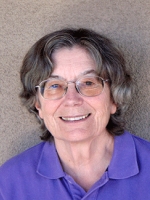
You are cordially invited to participate in the 2nd International Electronic Conference on Entropy and Its Applications. This event aims to bring together researchers working in the field to present and discuss their recent contributions, without the need to travel.
The field of entropy-related research has been particularly fruitful in the past few decades, and continues to produce important results in a range of scientific areas, including thermal engineering, quantum communications, and wildlife research. The inter-disciplinary nature of contributions from both theoretical and applied perspectives of entropy are welcome, including papers addressing conceptual and methodological developments, as well as new applications of entropy and information theory. The conference will address various research topics, these being brought together in six sessions, and which reflect the inter-disciplinary nature of entropy and its applications:
- Physics and Engineering: Thermodynamics, Statistical Mechanics, the Second Law of Thermodynamics, Reversibility, Quantum Mechanics, Black Hole Physics, Maximum Entropy Methods, Maximum Entropy Production, Evolution of the Universe
(Section A) - Information Theory: Shannon Entropy, Kullback-Leibler Divergence, Channel Capacity, Renyi and other Entropies, and Applications
(Section B) - Complex Systems: Self-Organization, Chaos and Nonlinear Dynamics, Simplicity and Complexity, Networks, Symmetry Breaking, Similarity
(Section C) - Chemistry and Biology: Chemical Networks, Energy, Enthalpy, Maximum Entropy Methods, Biological Networks, Evolution, DNA and RNA, Diversity
(Section D) - Machine Learning and Systems Theory: Artificial Intelligence, Neural Networks, Cybernetics, Robotics, Man–Machine Interfaces, Causality
(Section E) - Posters: In this section, posters can be presented stand-alone, i.e., without a proceedings paper that goes with it. Posters will be available online on this website during and after the e-conference. However, posters will not be added to the proceedings of the conference.
(Section P)
Accepted papers will be published in the proceedings of the conference, and selected papers will be considered for publication in Entropy with a 20% discount off the APC. Entropy is an open access publication journal of MDPI in the field of entropy and Information Theory (https://www.mdpi.com/journal/entropy).
Important Dates
- Abstract Submission: 10 September 2015 8 October 2015
- Notification of Acceptance: 15 September 2015 15 October 2015
- Submission of Full Paper: 25 October 2015
- Conference Open: 15-30 November 2015
Please do not hesitate to contact us if you have questions.
It is my pleasure to welcome you to the Second e-Conference on Entropy!
Best regards,
Dawn E. Holmes, Ph.D.
Department of Statistics and Applied Probability, University of California, USA
https://www.pstat.ucsb.edu/faculty/holmes/
Dawn Holmes received her Ph.D. degree in Computer Science from the University of Bradford, UK. She is a Senior Member of IEEE and also a member of several professional societies. She was recently a Guest Editor for Entropy, the journal, and also serves on the editorial board. She is also on the editorial boards of several other journals, including the International Journal of Advanced Intelligence Paradigms and the Journal of Supercomputing. Finally, Dr. Holmes is an Associate Editor for the journal, KES: Innovation in Knowledge-Based and Intelligent Engineering Systems.
As well as her research activities, she is dedicated to teaching and was awarded the UCSB Academic Senate Distinguished Teaching Award, which acknowledges Senate faculty members who have successfully united teaching with scholarly work.
She has published many peer-reviewed research papers in numerous journals and has presented at many conferences, including the annual MaxEnt conference, and has also co-edited, with Lakhmi Jain, research volumes on Data Mining, Machine Learning and Bayesian Networks. Her main research interests include Bayesian Networks, machine learning, data mining, knowledge discovery, and the Foundations of Bayesianism.
Call for Papers
e-conferences, virtually anywhere.
2nd International Electronic Conference on Entropy and Its Applications
The 2nd International Electronic Conference on Entropy and its Applications will be held from 15–30 November 2015 in the internet environment. The objective of this event is to bring scientists and engineers working in the field onto a common platform where they can present and discuss their recent contributions without the need to travel. All proceedings will be held online at https://www.sciforum.net/conference/ecea-2.
Contributions from both theoretical and applied perspectives of entropy will be covered. Submissions focusing on conceptual and methodological developments, as well as new applications of entropy and information theory will be covered in five topical sessions focusing on:
- Physics and Engineering (Section A)
- Information Theory (Section B)
- Complex Systems (Section C)
- Chemistry and Biology (Section D)
- Machine Learning and Systems Theory (Section E)
- Poster (Section P)
The conference will be completely free of charge—both to attend, and for scholars to upload and present their latest work on the conference platform. There will be a possibility to submit selected papers to the journal Entropy (ISSN 1099-4300; 1.564 (2013); 5-Year Impact Factor: 1.530 (2013); https://www.mdpi.com/journal/entropy). Authors who have presented their article at the 2nd International Electronic Conference on Entropy and Its Applications will receive a 20% discount. ECEA offers you the opportunity to participate in this international, scholarly conference without having the concern or expenditure of travel — all you need is your computer and access to the Internet. We would like to invite you to “attend” this conference by presenting your latest work.
Abstracts (in English) should be submitted by 10 September 2015 8 October 2015 online at https://www.sciforum.net/login. For accepted abstracts, the full paper can be submitted by 25 October 2015. The conference itself will be held 15–30 November 2015.
Paper Submission Guidelines
For information about the procedure for submission, peer-review, revision and acceptance of conference proceedings papers, please refer to the section "Instructions for Authors": https://www.sciforum.net/conference/ecea-2/instructions.
Conference Chairs
MDPI AG
jely.he@mdpi.com
holmes@pstat.ucsb.edu
lucy.lu@mdpi.com
yuejiao.hu@mdpi.com
Instructions for Authors
Submissions should be done by the authors online by registering with www.sciforum.net, and using the "New Submission" function once logged into system.
- Scholars interested in participating with the conference can submit their abstract (about 150-300 words covering the areas of manuscripts for the proceedings issue) online on this website until 10 September 2015, 8 October 2015.
- The Conference Committee will pre-evaluate, based on the submitted abstract, whether a contribution from the authors of the abstract will be welcome for the 2nd International Electronic Conference on Entropy and Its Applications. All authors will be notified by
25 September 201515 October 2015 about the acceptance of their abstract.
- If the abstract is accepted for this conference, the author is asked to submit his/her manuscript, optionally along with a PowerPoint and/or video presentation of his/her paper (only PDF), until the submission deadline of 25 October 2015.
- The manuscripts and presentations will be available on sciforum.net/conference/ecea-1/page/call for discussion and rating during the time of the conference 15–30 November 2015.
- Accepted papers will be published in the proceedings of the conference and Journal Entropy will publish the proceedings of the conference as a Special Issue. After the conference, the authors are recommended to submit an extended version of the proceeding papers to the Entropy Special issue with 20% discount of the APC charges.
Manuscripts for the proceedings issue must have the following organization:
First page:
- Title
- Full author names
- Affiliations (including full postal address) and authors' e-mail addresses
- Abstract
- Keywords
- Introduction
- Methods
- Results and Discussion
- Conclusions
- (Acknowledgements)
- References
Manuscripts should be prepared in MS Word or any other word processor and should be converted to the PDF format before submission. The publication format will be PDF. The manuscript should count at least 3 pages (incl. figures, tables and references). There is no page limit on the length, although authors are asked to keep their papers as concise as possible.
Authors are encouraged to prepare a presentation in PowerPoint or similar software, to be displayed online along with the Manuscript. Slides, if available, will be displayed directly in the website using Sciforum.net's proprietary slides viewer. Slides can be prepared in exactly the same way as for any traditional conference where research results can be presented. Slides should be converted to the PDF format before submission so that our process can easily and automatically convert them for online displaying.
Besides their active participation within the forum, authors are also encouraged to submit video presentations. If you are interested in submitting, please contact the conference organizer – conferences@mdpi.com to get to know more about the procedure. This is an unique way of presenting your paper and discuss it with peers from all over the world. Make a difference and join us for this project!
Posters will be available on this conference website during and after the event. Like papers presented on the conference, participants will be able to ask questions and make comments about the posters. Posters that are submitted without paper will not be included in the proceedings of the conference.
Submission: Manuscripts should be submitted online at www.sciforum.net/login by registering and logging in to this website.
- MS Word: Manuscript prepared in MS Word must be converted into a single file before submission. When preparing manuscripts in MS Word, the Electronic Conference on Entropy and Its Applications Microsoft Word template file (see download below) must be used. Please do not insert any graphics (schemes, figures, etc.) into a movable frame which can superimpose the text and make the layout very difficult.
- Accepted File Formats
- LaTeX: ensure to send a copy of your manuscript as a PDF file also, if you decided to use LaTeX. When preparing manuscripts in LaTeX, please use the MDPI LaTeX template files.
For LaTeX support, contact Ms Janine Daum (latex@mdpi.com).
- Paper Format: A4 paper format, the printing area is 17.5 cm x 26.2 cm. The margins should be 1.75 cm on each side of the paper (top, bottom, left, and right sides).
- Formatting / Style: The paper style of the Journal Entropy should be followed. You may download the template file to prepare your paper. The full titles and the cited papers must be given. Reference numbers should be placed in square brackets [ ], and placed before the punctuation; for example [4] or [1-3], and all the references should be listed separately and as the last section at the end of the manuscript.
- Authors List and Affiliation Format: Authors' full first and last names must be given. Abbreviated middle name can be added. For papers written by various contributors a corresponding author must be designated. The PubMed/MEDLINE format is used for affiliations: complete street address information including city, zip code, state/province, country, and email address should be added. All authors who contributed significantly to the manuscript (including writing a section) should be listed on the first page of the manuscript, below the title of the article. Other parties, who provided only minor contributions, should be listed under Acknowledgments only. A minor contribution might be a discussion with the author, reading through the draft of the manuscript, or performing English corrections.
- Figures, Schemes and Tables: Authors are encouraged to prepare figures and schemes in color. Full color graphics will be published free of charge. Figure and schemes must be numbered (Figure 1, Scheme I, Figure 2, Scheme II, etc.) and a explanatory title must be added. Tables should be inserted into the main text, and numbers and titles for all tables supplied. All table columns should have an explanatory heading. Please supply legends for all figures, schemes and tables. The legends should be prepared as a separate paragraph of the main text and placed in the main text before a table, a figure or a scheme.
For further enquiries please contact us at conferences@mdpi.com.
It is the authors' responsibility to identify and declare any personal circumstances or interests that may be perceived as inappropriately influencing the representation or interpretation of clinical research. If there is no conflict, please state here "The authors declare no conflict of interest." This should be conveyed in a separate "Conflict of Interest" statement preceding the "Acknowledgments" and "References" sections at the end of the manuscript. Financial support for the study must be fully disclosed under "Acknowledgments" section. It is the authors' responsibility to identify and declare any personal circumstances or interests that may be perceived as inappropriately influencing the representation or interpretation of clinical research. If there is no conflict, please state here "The authors declare no conflict of interest." This should be conveyed in a separate "Conflict of Interest" statement preceding the "Acknowledgments" and "References" sections at the end of the manuscript. Financial support for the study must be fully disclosed under "Acknowledgments" section.
CopyrightMDPI AG, the publisher of the Sciforum.net platform, is an open access publisher. We believe that authors should retain the copyright to their scholarly works. Hence, by submitting a Communication paper to this conference, you retain the copyright of your paper, but you grant MDPI AG the non-exclusive right to publish this paper online on the Sciforum.net platform. This means you can easily submit your paper to any scientific journal at a later stage and transfer the copyright to its publisher (if required by that publisher).
List of accepted submissions (43)
| Id | Title | Authors | Poster PDF | ||||||||||||||||||||||||||||||||||||||
|---|---|---|---|---|---|---|---|---|---|---|---|---|---|---|---|---|---|---|---|---|---|---|---|---|---|---|---|---|---|---|---|---|---|---|---|---|---|---|---|---|---|
| sciforum-006131 | Exergy Analisys of a Syngas-Fueled Combined Cycle with Chemical-Looping Combustion and CO2 sequestration | , , , | N/A |
Show Abstract |
|||||||||||||||||||||||||||||||||||||
|
Fossil fuels are still widely used for power generation. Nevertheless, it is possible to attain a short and medium term substantial reduction of greenhouse gas emissions to atmosphere through a sequestration of the CO2 produced in fuels oxidation. Chemical-looping combustion (CLC) is a thermochemical process where fuel oxidation is carried out through an intermediate agent that actuates as oxygen carrier between two separated reactors: i) a reduction reactor or fuel reactor, where the oxygen carrier is reduced oxidizing the fuel, and ii) an oxidation reactor or air reactor, where the oxygen carrier is oxidized in air. Overall, the system carries out the same chemical transformation as a conventional combustion, with the fundamental advantage of segregating the oxidation products CO2 and H2O into an output flow not diluted in air, where the only non-condensable gas is CO2. Therefore, CLC allows an integration of CO2 capture in the power plant without energy penalty. In addition, a lower exergy destruction in the combustion chemical transformation is achieved, leading to a greater thermal efficiency of the power generation process. Most efforts have been devoted to CLC systems based on methane as a fuel. This paper focus on a second-law analysis of a combined cycle power plant with CO2 sequestration using syngas as fuel and a CLC combustion system, considering the CO2 sequestration and storage stage. A comprehensive analysis of the performance of such a power plant from a Second Law point of view is carried out. The exergy flows along the power plant are evaluated and compared with a similar system based in a conventional combustion, finding a notable increase of the power plant efficiency. In addition, the power plant behaviour is simulated in a range of operating conditions, leading to an optimization of the key parameters of the cycle. Also, in order to investigate the influence of syngas composition on the results, different H2-content fuels are considered. |
|||||||||||||||||||||||||||||||||||||||||
| sciforum-006491 | Entropy as a metric generator of dissipation in metriplectic systems | N/A |
Show Abstract |
||||||||||||||||||||||||||||||||||||||
|
This lecture is a short review on the role entropy plays in dissipative dynamics formulated in terms of Leibniz bracket algebræ (LBA). While conservative dynamics is given an LBA formulation in the Hamiltonian framework, with total energy H generating the motion via classical Poisson brackets or quantum commutation brackets, an LBA formulation can be given to classical dissipative dynamics through the metriplectic bracket algebra (MBA): the conservative component of the dynamics is still generated via a Poisson algebra by the total energy H, while S, the entropy of the degrees of freedom statistically encoded in friction, generates dissipation via a metric bracket. Here a (necessarily partial) overview on the types of systems subject to MBA formulation is presented, and the physical meaning of the quantity S involved in each is discussed. Then, the parallel between the classical MBA and the commutator-anticommutator algebræ of open quantum systems is examined: the role of the quantum environment is analysed in view of a thorough comparison of it with the role of classical microscopic degrees of freedom giving rise to dissipation through their entropy in MBA. |
|||||||||||||||||||||||||||||||||||||||||
| sciforum-006479 | Entropy, Decoherence and Spacetime Splitting | N/A |
Show Abstract |
||||||||||||||||||||||||||||||||||||||
|
Objects in classical world model are in an "either/or" kind of state. A compass needle cannot point both north and south at the same time. The quantum world, by contrast, is "both/and" and a magnetic atom model has no trouble at pointing both directions at once. When that is the case, physicists say that a quantum object is in a "superposition" of states. In previous paper, we already discussed the major intrinsic limitations of "Science 1.0" arbitrary multi-scale (AMS) modeling and strategies to get better simulation results by "Science 2.0" approach. In 2014, Computational information conservation theory (CICT) has shown that even the most sophisticated instrumentation system is completely unable to reliably discriminate so called "random noise" (RN) from any combinatorically optimized encoded message (OECS, optimized exponential cyclic sequence), called "deterministic noise" (DN) by CICT. Unfortunately, the "probabilistic veil" can be quite opaque computationally, and misplaced precision leads to confusion. The "Science 2.0" paradigm has not yet been completely grasped by many contemporary scientific disciplines and current researchers, so that not all the implications of this big change have been realized hitherto, even less their related, vital applications. Thus, one of the key questions in understanding the quantum-classical transition is what happens to the superposition as you go up that atoms-to-apple scale. Exactly when and how does "both/and" become "either/or"? As an example, we present and discuss the observer space-time splitting case. In other words, we show spacetime mapping to classical system additive representation with entropy generation. It is exactly at this point that "both/and" becomes "either/or" representation by usual Science 1.0 approach. CICT new awareness of a discrete HG (hyperbolic geometry) subspace (reciprocal space) of coded heterogeneous hyperbolic structures, underlying the familiar Q Euclidean (direct space) surface representation can open the way to holographic information geometry (HIG) to recover system lost coherence and to overall system minimum entropy representation. |
|||||||||||||||||||||||||||||||||||||||||
| sciforum-005967 | Are Shannon entropy and Residual entropy synonyms? |
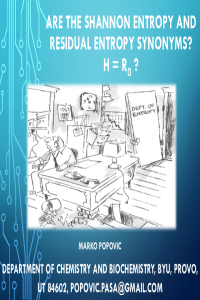
|
Show Abstract |
||||||||||||||||||||||||||||||||||||||
|
At temperatures close to absolute zero, individual symmetric or asymmetric molecules that comprise a thermodynamic system organize themselves into crystals that we can comprehend as macromolecules. Crystals can be ideal (perfect crystals) if they consist of monotonous arrays of aligned symmetric or asymmetric molecules. Unideal (imperfect crystals) comprize nonmonotonic arrays of asymmetric molecules. Therefore, nonmonotonous arrays contain an information code and a certain amount of information, I. The disorder of such a thermodynamic-intofmation system is characetrized by Shannon entropy, H, in informatics and by residual entropy, S0 or R0, in thermodynamics. Both quantities are based on the statistical coin model and in both cases probabilities are determined by the Gaussian normal distribution. However, the probabilities in thermodynamic entropy, S, are described by the Boltzmann distribution. Thus, we see that a thermodynamic system possesses three kinds of entropy: thermodynamic entropy, residual entropy and Shannon entropy. The relationship of these three entropies, however, still remains unclear. In order to shed more light on this problem, a comparative analysis of the three entropies was done. Thermodynamic entropy of an ideal crystal was calculated by the Boltzmann entropy equation, treating it as one large macromolecule. Shannon entropy and residual entropy were found through the Shannon equation and Boltzmann entropy equation, respectively. In the calculation of Shannon entropy, the constant in the Shannon equation was set equal to the Boltzmann constant, in order for it to be comparable with thermodynamic and residual entropy. Entropies of real gasses were also analyzed. Thermodynamic entropy of real gasses was calculated from the high temperature ideal limit to the condensation temperature using van der Waals, Berthelot and Redlich-Kwong models. Our analysis leads us to conclusion that the residual entropy, S0 or R0, of a closed thermodynamic system that contains asymmetric particles (i.e. CO, H2O, N2O) aligned in nonmonotonic series is equal to its Shannon entropy, H. So the information theory and classical thermodynamics have at least one strong common point – the equality of Shannon entropy and residual entropy, H = R0.
|
|||||||||||||||||||||||||||||||||||||||||
| sciforum-006400 | An inflationary explanation to the universe's low initial gravitational entropy | , | N/A |
Show Abstract |
|||||||||||||||||||||||||||||||||||||
|
The early universe was markedly close to thermal equilibrium, as observed in the homogeneity of CMB photons with temperature deviations of ΔT/T~10-5. Yet, the 2nd Law ensures total entropy will increase. These two facts suggest that this state of thermal equilibrium is one of low entropy, at odds with the current understanding of the high entropic content of equilibrium states. Low initial gravitational entropy may be the cause of low entropy in the early universe. Penrose’s reliance on the fortunate initial value of the Weyl curvature tensor is insufficient in explaining low initial gravitational entropy. Rather, an inflationary model explains how an arbitrary universe could be driven to the ‘specialness’ of low initial gravitational entropy. We suggest that the rapid expansion of false vacuum energy, and its decay during reheating, deposited matter and radiation into the universe homogenously and ‘unclumped’, hence in a state of low gravitational entropy. This puts the early universe in a low entropy state. |
|||||||||||||||||||||||||||||||||||||||||
Keynotes
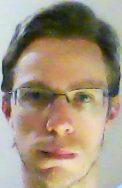 Dr. Alexandre L. M. Levada
Dr. Alexandre L. M. Levada
University of São Carlos, Brazil
Alexandre L. M. Levada received his B.Sc. degree in Computer Science from São Paulo State University in 2002, his M.Sc. degree in Computer Science from the Federal University of São Carlos in 2006, and his Ph.D. degree in Computational Physics from São Paulo University in 2010. He is currently associated with the Computing Department at the Federal University of São Carlos, SP, Brazil. His main research interests include random fields, complex systems, and mathematical models for pattern recognition and image processing
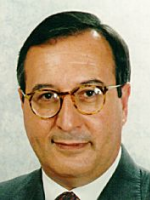 Prof. Dr. Rodolfo A. Fiorini
Prof. Dr. Rodolfo A. Fiorini
Polytechnic University of Milan, Italy
Rodolfo A. Fiorini is a tenured Professor of Bioengineering at the Department of Electronics, Information and Bioengineering (DEIB) of the Polytechnic University of Milan, Italy. In 1979, Dr. Fiorini was awarded the "Energetics Fellowship" from the Italian Ministry of Scientific Research and attended Bocconi University, School of Economics, and the Polytechnic University of Milan. He specialized in Energetics. Dr. Fiorini gained his Ph.D. degree in Energetics (100/100) from the Polytechnic University of Milan in 1984. In the 1980s, Dr. Fiorini was a research associate at Stanford University, Department of Aeronautics and Astronautics, Stanford, CA, U.S.A. and at the University of California at Los Angeles, Department of Computer Science, CA, U.S.A. The U.S.A. DOL appointed him with a Ph.D. degree in Bioengineering in 1989. Dr. Fiorini is a member of the IEEE and the EMBC, and a member of the WSEAS. Dr. Fiorini founded the Research Group on Computational Information Conservation Theory (CICT) at the Polytechnic University of Milan in the 1990s. Since 2009, he has been responsible for the main course on Well-being Technology Assessment at DEIB. Dr. Fiorini is the author of more than 240 national, international, scientific, and technical articles, papers, seminars, presentations, and books. His current research interests include entropy, biomedical cybernetics, neuroscience, well-being, consciousness, nanoscience, computer simulation, information science, anticipatory learning systems, networked-control systems, machine learning, machine intelligence, statistical and deterministic signal processing, statistical and combinatorial optimization techniques, decision support systems, and advanced management systems.
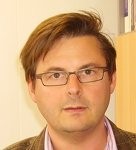 Prof. Dr. Francisco (Paco) Chinesta
Prof. Dr. Francisco (Paco) Chinesta
Ecole Centrale de Nantes, France
Francisco Chinesta, born in 1966 in Valencia, Spain, is currently a Professor of Computational Mechanics at the Ecole Centrale of Nantes (France). He was the EADS Chair Professor on the advanced modeling of composites manufacturing processes and he is, at present, the ESI Chair Professor on the advanced modeling and simulation of materials and processes implying multi-scale and multi-physics approaches of solid and complex fluids, which are encountered in aeronautic and space applications. He is also an associate member of the University of Wales Institute of Non-Newtonian Fluid Mechanics. Francisco Chinesta is the author of more than 200 papers in peer review journals, 50 contributions to research books, and more than 700 contributions to conference proceedings. He has participated in the organization (as a member of the scientific or organizing committees that are responsible for minisymposia, and many times, as the conference chairman) of 177 workshops and conferences, most of them international. He has supervised 31 Ph.D. theses. He received, in 2000, the ESAFORM (European Scientific Association for Material Forming) Award. In 2008, he received the French Maurice Couette Prize for his research and contributions in computational rheology. He has given 109 keynote or plenary lectures, most of them in international conferences, on material forming, computational mechanics, and rheology, and has had numerous invited seminars in different universities around the world. In 2011, he was nominated as a senior member of the “Institut Universitaire de France” – IUF, and in 2015, he was elected as a fellow of the Spanish Royal Academy of Engineering.
Dr. Chinesta's main research contribution concerns the proposal and development of efficient model reduction strategies, based on proper orthogonal decomposition, and more particularly, on the development of separated representation-based strategies that make possible the solution of models suffering the so called “curse of dimensionality.” His research opens up an unimaginable panoply of possibilities for solving models that were, until now, never solved; these models are usually encountered in computational science and engineering.
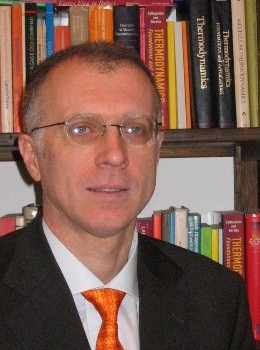 Prof. Dr. Gian Paolo Beretta
Prof. Dr. Gian Paolo Beretta
University of Brescia, Italy
Prof. Gian Paolo Beretta, born in Monza, Milan, Italy in 1956, is a professor of fluid and thermal sciences at the University of Brescia. Prof. Beretta (Laurea in nuclear engineering in 1979 from the Polytechnic University of Milan, M.S. in mechanical engineering in 1980, and Ph.D. in mechanical engineering in 1982, from the Massachusetts Institute of Technology) has 30 years of academic experience in mechanical engineering. He has supervised over 50 graduate students and has published over 100 papers in peer reviewed international journals and proceedings of international conferences (53 Web of Science articles, 500 citations, H index = 14). He has been an assistant professor at the Massachusetts Institute of Technology (1981-1986), a ricercatore at the Polytechnic University of Milan (1983-1986), an associate professor (since 1987), and full professor (since 1994) at the University of Brescia, where from 1999 to 2006, he was the elected Director of Mechanical Engineering Studies and led curricula reform. Currently, Prof. Beretta is the Head of the Doctoral Program in Mechanical and Industrial Engineering at the University of Brescia. His major contributions include: a widely used, fundamentally based description of flame propagation in spark-ignition engines; a number of studies on the conceptual, mathematical, and axiomatic foundations of thermodynamics; a number of experimental studies in the heat transfer and fluid mechanics area; a number of studies on the foundations of quantum physics, as related to thermodynamics; several contributions to the extension of the theory of irreversible nonequilibrium processes to the domain of chemical kinetics ad quantum thermodynamics through the introduction of the principle of Steepest Entropy Ascent [review in J. Maddox, Nature, Vol.316, p.11 (1985)]; and the coauthoring, with E.P. Gyftopoulos, of an authoritative reference textbook on the rigorous foundations of thermodynamics and its engineering applications (1991 1st Macmillan Ed.; book review in Nature [reviews in P.T. Landsberg, Nature, Vol.356, p.28 (1992) and M. Silvestri, Int. J. Theor. Appl. Mechanics, Vol.28, 354 1993]). Since 2005, the aforementioned textbook has been introduced in the prestigious Dover publications collection (350 Google Scholar citations). As a sign of international recognition, Prof. Beretta was named an ASME Fellow in 2006. Prof. Beretta joined the University of Brescia in 1987 when the engineering faculty was composed of less than ten units (today it has over 180). He founded the laboratory of Fisica Tecnica and mentored a group that currently consists of two full professors, three assistant professors, one technician, eight doctoral students, one post-doc, and several undergraduate thesis students.
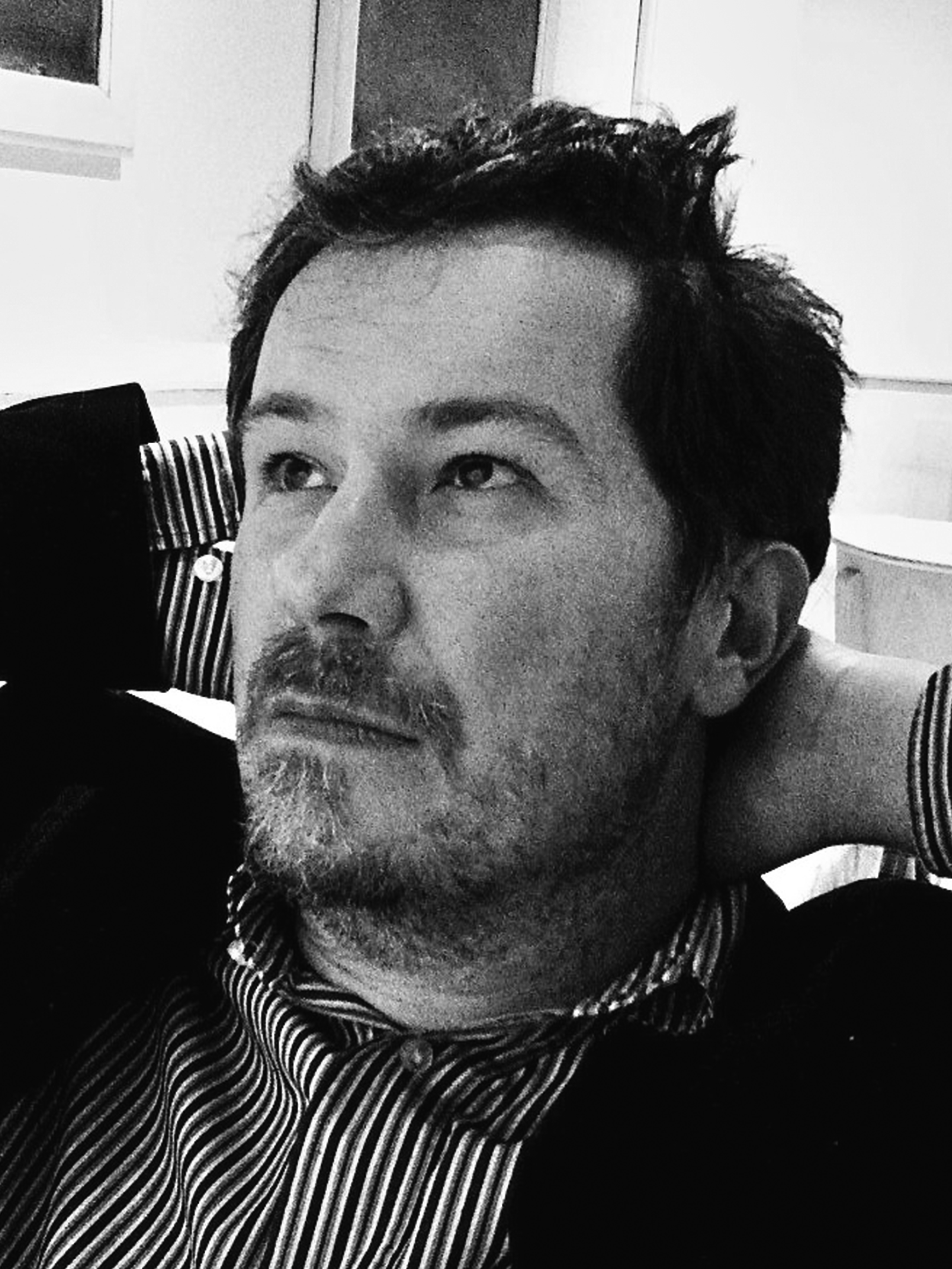 Dr. Massimo Materassi
Dr. Massimo Materassi
Italian National Research Council, Italy
Dr. Massimo Materassi was born in Florence, Italy, in 1970. During his childhood, he was greatly inspired by the variety of living beings along the flow of natural history. In high school, he became interested in physics, and he earned an M.S. in General Physics in 1996 from the University of Florence. In 2000, Dr. Massimo Materassi defended a Ph.D. thesis in Theoretical Physics at the University of Perugia, Italy, concerning the Hawking Radiation spectrum from a black hole as a consequence of the Virasoro symmetry of event horizon dynamics, and became mainly interested in the description of dynamics as due to underlying symmetries. In 2001, Dr. Materassi won a permanent position as a researcher at the Italian National Research Council (CNR). From 2001 to 2004, he has been working as an applicative physicist in ionospheric dynamics and imaging. Since 2004, Dr. Materassi has been associated with the Institute for Complex Systems of CNR (ISC), after a post-doc in near-Earth plasma turbulence at the Space Research Centre of the Polish Academy of Science (CBK-PAN) in Warsaw. Dr. Materassi’s research interest basically focuses on the possibility of describing natural systems through physical laws and symmetries. Entropy- and information-related quantities turn out to have a major relevance in this field, and are dominated by dissipative and learning processes. For several years, Dr. Materassi’s activity has been mainly devoted to the algebrization of dissipation dynamics and information dynamics in natural processes
Conference Organizers
Chair of the 2nd International Electronic Conference on Entropy and Its Applications
Dr. Dawn E. Holmes
University of California Santa Barbara,
Santa Barbara, CA
USA
Editorial Board of the Journal Entropy
Scientific Advisory Committee
Dr. Dawn E. Holmes, University of California Santa Barbara, USA
Dr. Takuya Yamano, Kanagawa University, Japan
Prof. Dr. Badong Chen, Xi'an Jiaotong University, China
Prof. Dr. Giorgio Kaniadakis, Department of Applied Science and Technology, Politecnico di Torino, Italy
Prof. Dr. Alexander Gorban, Department of Mathematics, University of Leicester, UK
Dr. Deniz Gencaga, Carnegie Mellon University Pittsburgh, PA, USA
Organizing Committee
Dr. Shu-Kun Lin, MDPI AG, Basel, Switzerland
Ms. Jely He, MDPI Branch Office, Wuhan
A. Physics and Engineering
The main areas of interest of this section are: Thermodynamics, Statistical Mechanics, the Second Law of Thermodynamics, Reversibility, Quantum Mechanics, Black Hole Physics, Maximum Entropy Methods, Maximum Entropy Production, Evolution of the Universe and relevant research
This section is chaired by:
Dr. Takuya Yamano, Department of Mathematics and Physics, Faculty of Science, Kanagawa University, 2946,6-233 Tsuchiya, Hiratsuka, Kanagawa 259-1293, Japan
Session Chair
Dr. Takuya Yamano, Kanagawa University
B. Information Theory
Shannon Entropy, Kullback-Leibler Divergence, Channel Capacity, Renyi and other Entropies, and Applications
This section is chaired by:
Prof. Dr. Badong Chen, Institute of Artificial Intelligence and Robotics, Xi'an Jiaotong University, 28 Xianning West Road, Xi'an 710049, China
Session Chair
Professor Badong Chen
C. Complex Systems
Self-Organization, Chaos and Nonlinear Dynamics, Simplicity and Complexity, Networks, Symmetry Breaking, Similarity
This section is chaired by:
Prof. Dr. Giorgio Kaniadakis, Department of Applied Science and Technology, Politecnico di Torino, Corso Duca degli Abruzzi 24, 10129 Torino, Italy
Session Chair
Professor Giorgio Kaniadakis, Politecnico di Torino
D. Chemistry and Biology
Chemical Networks, Energy, Enthalpy, Maximum Entropy Methods, Biological Networks, Evolution, DNA and RNA, Diversity
This section is chaired by:
Prof. Dr. Alexander Gorban, Department of Mathematics, University of Leicester, Leicester LE1 7RH, UK
Session Chair
Professor Alexander Gorban, University of Leicester
E. Machine Learning and Systems Theory
Artificial Intelligence, Neural Networks, Cybernetics, Robotics, Man–Machine Interfaces, Causality
This section is chaired by:
Dr. Deniz Gencaga, Carnegie Mellon University Pittsburgh, PA, USA
Session Chair
Dr. Orhan Deniz Gencaga, ALCOA INC.
P. Posters
In this section, posters can be presented stand-alone, i.e., without a proceedings paper that goes with it. Posters will be available online on this website during and after the e-conference. However, posters will not be added to the proceedings of the conference
Dr. Dawn E. Holmes, Department of Statistics and Applied Probability University of California Santa Barbara Santa Barbara, CA 93106-3110, USA
Session Chair
Dr. Dawn Holmes








